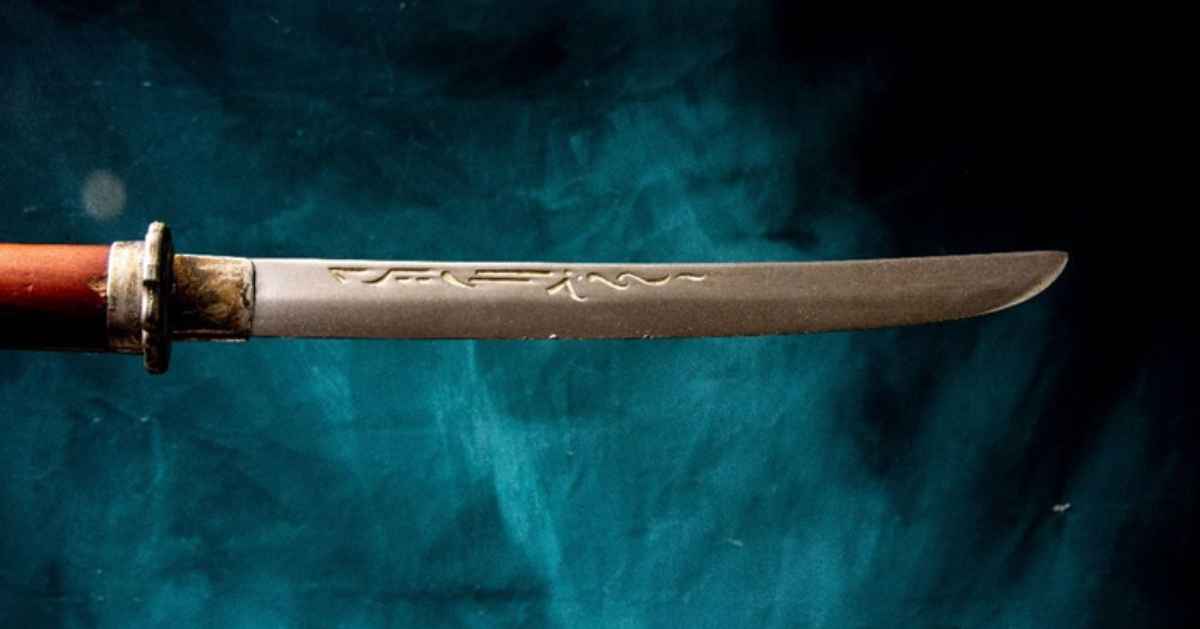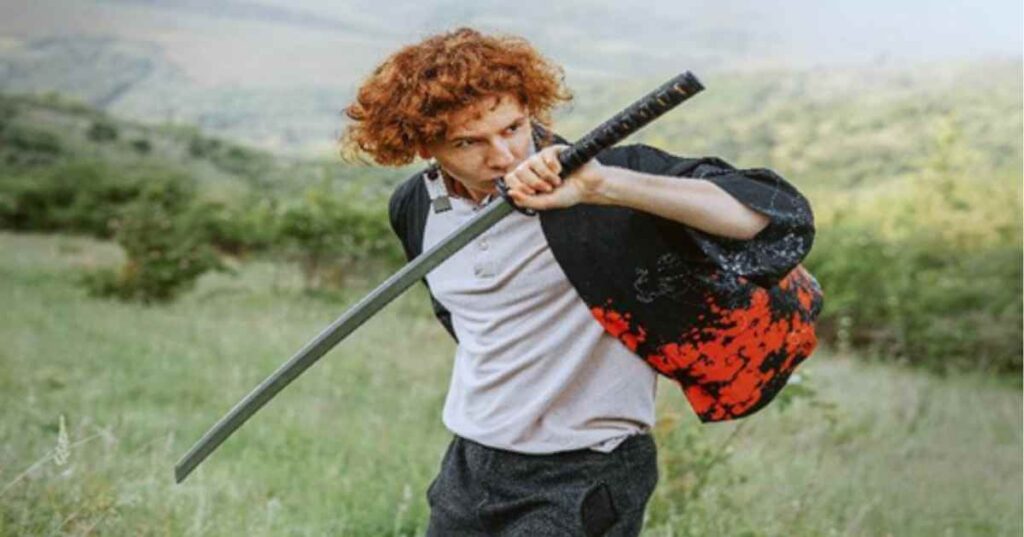The Power of the Katana: A Guide to Ancient Japanese Art

What Does a Katana Consist of?
A katana is a sword with a curved blade, similar to a saber, that is easily recognizable. A katana is made up of two parts: the guard (called tsuba in Japanese) which protects your hand from your opponent’s blows and prevents your hand from sliding onto the blade during an attack, and the handle (called tsuka).
Thank you for reading this post, don't forget to subscribe!You probably already know a lot about the katana, but what you may not be aware of is that an authentic samurai katana can cost up to 4,000 euros and more. What you are likely looking for are samurai sword replicas, which are much cheaper and serve their purpose very well, but you must carefully select them. While the katana is one of the most well-known samurai swords, it is not the only sword. The katana was one of the main pieces of samurai armor, along with the Daisho (a short sword) and Wakazashi (a short sword). The third piece of armor was the Tanto dagger, which was a short personal weapon.
History of Japanese Katana:
The history of the katana is extensive and dates back to the tenth century. The samurai, the greatest warriors of medieval Japan, were the ones who first wielded it as a weapon. The sword served as a weapon in combat as well as a status and honor symbol for samurai. Crafting a katana was considered a highly esteemed art form, requiring months or even years of practice for skilled swordsmiths to perfect each weapon.
Japan’s katana has enthralled people all over the world with its workmanship and meaning. However, this recognizable sword is more complex than it first appears. Explore the intriguing article to learn about the cultural significance, rich history, and hidden meanings of the Japanese katana. Uncover the mysteries of this ancient weapon, learn about the art of collecting swords, and investigate the mysterious symbols connected to the katana. Let’s set out on a quest to discover the Japanese katana’s mysteries for katana for sale.
Unique Features of the Japanese Katana:
Six points make the katana very special. Everyone needs to know the features of the Japanese Katana.
- Unique Blade
- Folded with a dozen layers
- 3D Tips
- Martensite
- Aesthetics Occurs in the Transition Line
- Mounting
These are the characteristics that make the Katana so special and it captured the imagination of people all over the world, and its history is shrouded in mystery and legend. So, seize your swords and come along on this fascinating exploration voyage with us.
Are you looking for a quality Japanese Katana?
The sword should ideally be within your reach. The correct one will be obvious to you-or anyone else rather, feel it! However, there are other techniques to determine the sword’s quality online. Examining the blade is the key. Good steel ought to be used to make it.
Usually, the steel is made up of two layers: one low carbon and the other high carbon. Several historically documented production processes are still in use nowadays, such as patterning forging, or bending.
Superior steel with carbon, which is incredibly durable, was used to make the blade’s outer sheathing and edges. Low-carbon steel, on the other hand, is flexible, which lessens the impact of hits. It served as the blade’s central component. Since using just one kind of steel would not be appropriate, many varieties with varying carbon contents were blended to produce a combination of strength and elasticity.

Maintenance and Rules of the Japanese Sword:
Although they are well known for their amazing cutting ability, Japanese katanas are also prone to breakage. Specifically, the sword’s fine polish is extremely delicate. As the short-term custodians of these works of art and historical relics, we must see to it that they are preserved for upcoming generations of collectors.
Daily Care for Katana:
To keep a sword from slipping out of its sheath or becoming unguarded, it is recommended to keep it in a sword bag whenever it is not in use. Avoid storing Japanese swords in wet basements and instead keep them horizontally in a dry place.
Always hold the handle above the scabbard when you wield a mounted sword, be it a samurai sword or a plain wooden sword (shira-saya). Never mount a sword without first inserting the pin (mekugi) into the hilt and tang holes. Do not touch the shiny part of the blade. Your fingers’ slightly acidic sweat can leave marks on the weapon’s body. Do not touch your clothes to the shiny part of the sword. People think this is rude, and it can hurt the polish.
Maintenance of Sword Mounts:
Maintain their cleanliness, dryness, and protection. Avoid using any mildly abrasive substances when cleaning sword mounts. It is advisable to entrust the repair to individuals who have received enough training.
Conclusion:
Beyond its practical use as a weapon, the katana represents the ideals, culture, and history of Japan. It is a highly desirable piece for collectors and enthusiasts due to its elaborate craftsmanship and abundant symbolism. One way to better appreciate the Japanese Katana is to learn about its background and the role it played in Japanese history.
